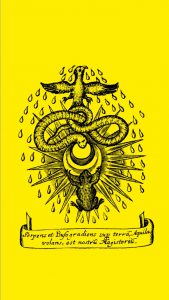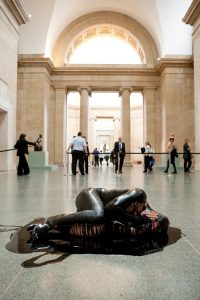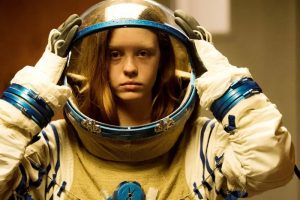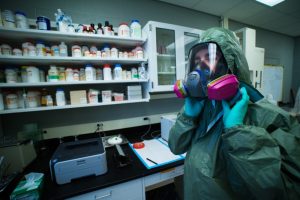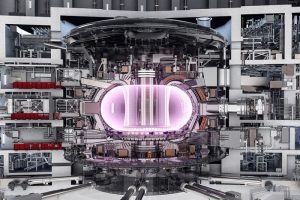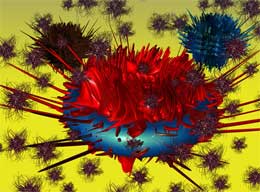 The first Biosphere is Gaia, the planet Earth.
The first Biosphere is Gaia, the planet Earth.
Biosphere 2 was an artificial closed ecological system constructed in 1987/89 in Arizona. It was used to test how people could live and work in a closed biosphere, while carrying out scientific experiments. It explored the possible use of closed biospheres in space colonization, and also allowed the study and manipulation of a biosphere without harming Earth’s.
BIOS-3 was a closed ecosystem at the Institute of Biophysics built between 1965 and 1972 in Siberia. It consisted of a 315-cubic-metre habitat suitable for up to three persons.
BIOS is also a computer term that stands for Basic Input/Output System.
Bios 4 is the exhibition on bio and environmental art currently running in Sevilla and if you trust dear old aunt Régine, you should book a flight to Sevilla and visit the show because you’re not going to see anything like that anytime soon.
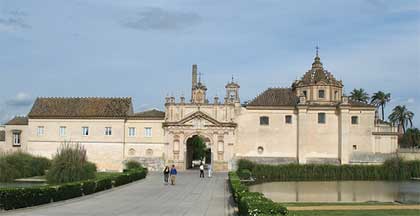 The Centro Andaluz de Arte Contemporáneo (image by Amy Youngs)
The Centro Andaluz de Arte Contemporáneo (image by Amy Youngs)
Here’s the blurb about the exhibition:
The launch of the Human Genome Project in 1990 -the identification of the 20.000-25.000 genes of human ADN- would have been difficult to realize in only 13 years without the power and speed of digital computers. That’s also the moment when environmental and biological art started to emerge. Bios 4 is an exhibition and an information platform that showcases a selection of examples of these two important categories of art on the 21st century.
The close collaboration between artists, scientists and technology experts to develop new creative projects characterizes this recent area of investigation that brings the art closer to knowledge. That’s what the curator of the exhibition, Antonio Cerveira Pinto, calls “cognitive art.” Cognitive Art emerges when artists have to build up specific scientific or technological set of skills and knowledge in order to use them in their own artistic process. The use of this new knowledge and cognition symbolises a “post-contemporary” culture. The artists’ work is not always perfect in terms of form, what matters is the questions that arise from it.
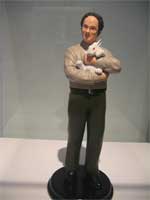
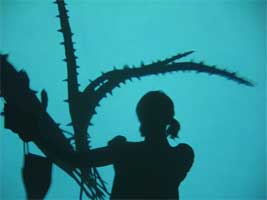 A statuette of Eduardo Kac with Alba (!!) and Mark Cypher‘s spectacular Biophilia
A statuette of Eduardo Kac with Alba (!!) and Mark Cypher‘s spectacular Biophilia
The raw material of artistic expression of biotechnological art or bioart, which has some roots in the Body Art of the 1960-70, is life itself or its components (genes, organs, organisms, tissues), or the virtual living matter, digital stimulation of ADN, of proteins, and of course it can also be the result of the intersection of those two realities. A philosophical and ethical debate has recently sparkled from the interest for the new potential for manipulating the living. Bioart takes part into the discussion with works that often reflect an ironic metaphorical exercise or a clearly critical one.
For the art of nature/ecologiy/environment or of sustainability, which antecedents can be traced to the Land Art of the ’70s, the medium of artistic creation is the natural sphere in all its extensions and complexities. The idea of the close connectivity between all the organisms that represent terrestrial life for billions of years inspire the dynamic definition of this new artistic field. Issues of pollution, the exhaustion of fossil fuels of energy sources and global warming are turning into the main areas of concern of the environmental artists of this new century.
Antonio Cerveira Pinto points out that the art arising from post-contemporary complexity does not focus on the forms spawned by technology but focuses on the worlds that are possible for a humanity surrounded by technology while threatened by energy exhaustion and ecological imbalances. The works selected in Bios 4 bear witness to a way of making art that embodies both scientific curiosity and the poetical formulation of a new type of knowledge.
Image on top left corner is Machinic Diatoms by Ken Rinaldo. The 3D irrealities envision the day when designer molecular constructors will permit unicellular machines, nano machines to co-inhabit (invited or not) and maintain the body.
Bios 4 – Technological and Environmental Art runs until September 2 at the Centro Andaluz de Arte Contemporaneo, Sevilla.

